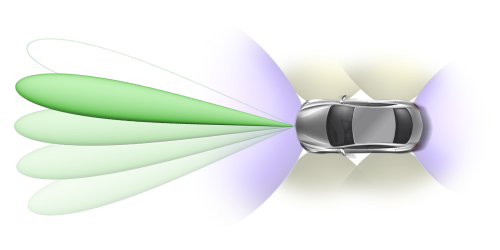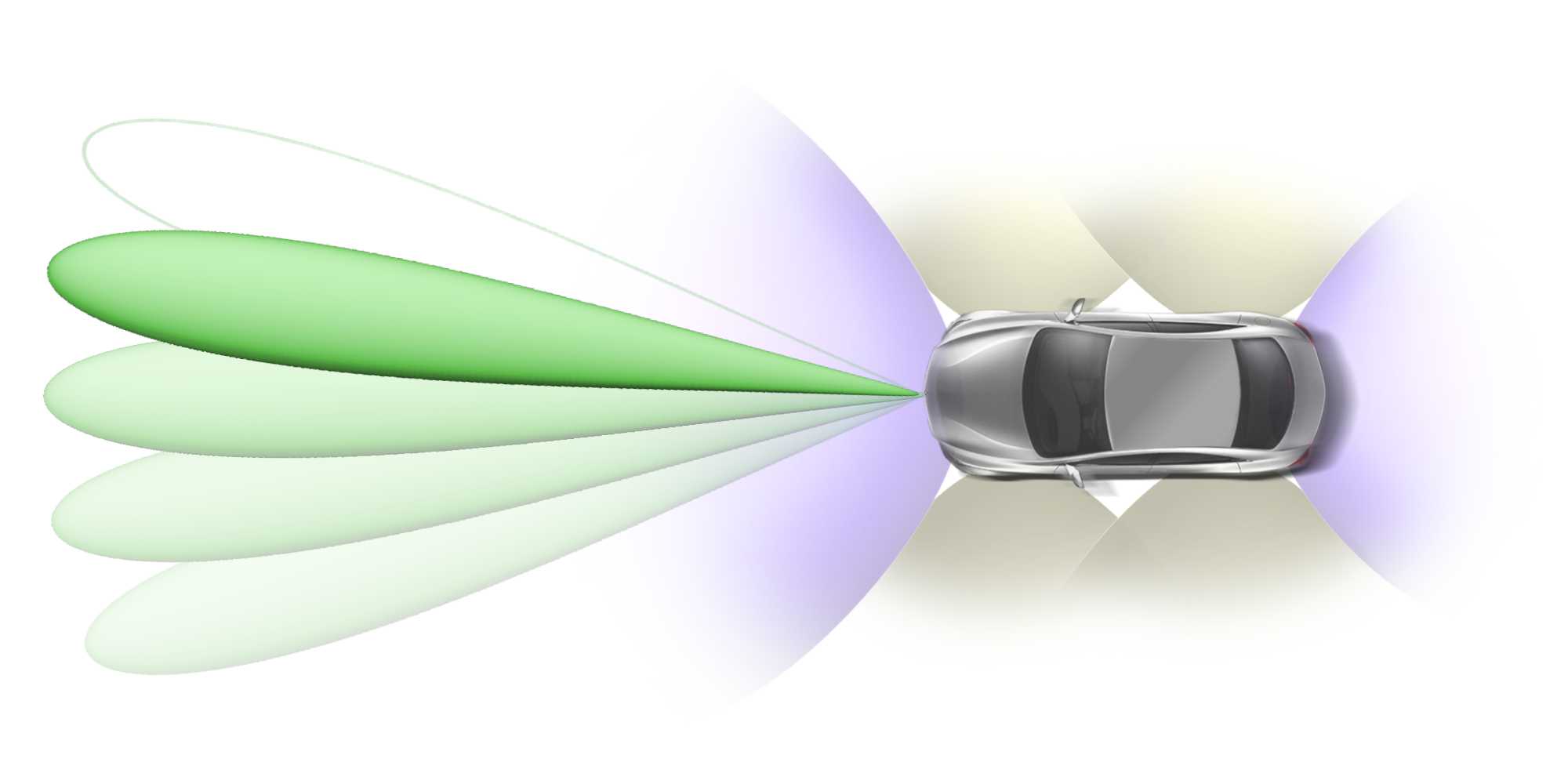Vehicular Radar

traffic Alert
collision
warning
Lane Departure Warning
parking
aid
Figure 1: Tasks of vehicular radar.

traffic Alert
collision
warning
Lane Departure Warning
parking
aid
Figure 1: Tasks of vehicular radar.

traffic Alert
collision
warning
Lane Departure Warning
parking
aid
Figure 1: Tasks of vehicular radar.
Vehicular Radar
Remember: Radar works even in all weather conditions like heavy rain and fog. Radar can penetrate obstacles, such as tall grass or shrubs. In addition: the human driver can only look in one direction. Any sets of radar may be installed in a vehicle, all working at the same time and scanning different directions. The results can be displayed in a Head-up-Display in the driver's field of vision.
The technology behind it consists of several FMCW radars with each dynamically sized antenna pattern. Most modern systems can even evaluate the signals transmitted and the echo signals of other vehicles in addition (like a bistatic radar). Often such systems are coupled with additional sensors such as infrared cameras or laser.
The radars operate in the frequency range of either 24 GHz (K band), 76 GHz or 96 GHz (W band). Depending on the task is the radar either a pure FMCW radar or (for longer distances) an FMICW radar. These radar sets usually use array antennas with different feeding points for the high frequency of the transmitter. Each feeding point resulting in another antenna pattern with another main beam direction. With a PIN diode switch, different feeding points are selected. Thus, the antenna pattern can be changed very quickly (ie electronically scanned), and so the space in the direction of travel can be scanned in two dimensions.
“Distronic” Radar

Figure 2: DISTRONIC sensor behind the Mercedes star
The “Distronic” radar is an early brake assist based on radar. The three transmitters and receivers of the compact radar unit constantly emit signals and register the traffic scenario to a distance of up to 150 meters (500 feet) ahead. If the radar impulses strike an obstacle, they are reflected back at a different frequency. The “Distronic” computer makes use of this phenomenon (the Doppler effect) to calculate the relative speed between the vehicles, and their distance is derived from the transit time of the reflected signals.
Adaptive Cruise Control
The Adaptive Cruise Control (ACC) holds not only the speed like cruise control but also the predetermined distance to the vehicle ahead. Brakes the car in front, also delays the own vehicle, as it automatically moves faster when the car in front is faster. The most elaborate systems today can drive in stop-and-go traffic also independently. In addition to comfort, the ACC brings safety.
Enhanced Synthetic Vision Radar
These radars provide computer-generated visual scenes. Radars provide the driver with high-resolution video displays (Head-up-Display, HUD) of the environment during low visibility conditions. An Head-up-Display is a display of instrument readings that can be seen without lowering the eyes, typically through being projected onto the windshield or as a cheaper solution to an additional installed smaller semitransparent plate in front of it. Recognized by the instruments danger areas are particularly marked by lines or symbols without limiting the direct line of sight.
Driverless Car
Here gives the radar a complete panoramic view, couples its data with the images of a high-resolution camera and the GPS and drives the vehicle fully automatically through the road traffic. Here the vehicle must also pass an official driving test like a novice driver.
